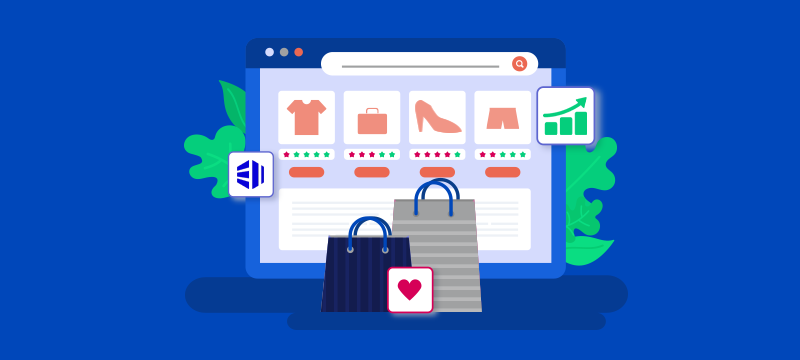Getting visitors to your website requires a great deal of work and, for many businesses, quite a bit of advertising expenditure. What you don’t want is all this effort and money to go to waste. Once those visitors land on your product pages, you want them to buy your products. Some websites do this far more successfully than others and often the key factor is in the way the products pages are optimised for selling. In this post, we’ll give you 5 tips on how to make your product pages sell more.
- Make sure you have an effective call to action
The ultimate aim of any product page is to sell the product. On a website, this means getting the visitor to carry out an action, usually clicking on a button which may say Add to Basket or Buy Now. That button, or to be precise, the words written on it, is your call to action, i.e., it is directing the customer what to do.
The call to action is one of the most crucial elements on the page and if it is ineffective, it will impact on your conversion rates. To increase the effectiveness of your call to action button,the instructions need to be clear and carrying them out needs to be easy. The more complex it is, the fewer visitors will click. All it needs to do is guide the visitor on the next step of the buying journey.|
In addition to being simple, it also has to be conspicuous. If it is hard to find, some customers are going to miss it, get frustrated and go shopping elsewhere. For this reason, it needs to be clearly visible, appropriately sized to catch attention and stand out from the other elements of the page, such as your product description. Using a contrasting colour for the button’s font and background can also help improve its chances of being clicked.
To improve effectiveness even more, you can use A/B split testing to test different versions of your call to action to see which of them has the biggest effect on conversions. - Use product images of the highest quality
If people are going to buy something online, product photography and video are the only things that let them see what it looks like. It doesn’t take a genius to work out, therefore, that if the photographs are naff, the products featured in them aren’t going to look too good either. If your site has poor quality images, it’s unlikely to be achieving the levels of sales it could be doing.
Unfortunately for those sites, product images are some of the most powerful elements of a product page. When done well, not only do they give a thorough idea of what the product actually looks like, they also put the product in a setting that sells an aspiration that the customer wants to achieve. They won’t just see a vacuum cleaner, they’ll see the clean house with designer furniture that matches the lifestyle they aspire to.
It’s these clever images with their powerful messages that grab the customer’s attention and make them want to buy. To improve your product pages effectiveness, make sure you use high-quality images which show various views of the product and, if possible, show how it will improve the life of the purchaser. Key to this, however, is making sure that the images you use reflect the aspirations of your target audience and show off the identity of your brand. - Use product descriptions that sell
Many product descriptions fail to be effective because they focus too much on the features of a product and not enough on the benefits of owning it. What you need to consider is that when people buy something, they are looking for a solution. They want a product that will solve a problem, whether that’s a vacuum cleaner to make it easier to clean the house or a new jacket to make them feel good when they are going out.
An effective product description will illustrate how a feature solves a problem or benefits the consumer. For example, if a vacuum cleaner is bag less, then state the benefits that it is easier to empty and will save money on the cost of replacement bags.
While you may think it is obvious what the benefits are, this doesn’t mean you should assume the same for your customers. What’s more, it is possible to write the benefits to match the needs and aspirations of your target audience. - Write copy for people, not search engines
With so much focus on SEO and doing well in search engine results, the importance of how well the copy reads for a visitor is often overlooked. However, if all they find is a bulleted list of features and descriptions that are overloaded with keyword phrases, it is not going to keep them engaged.
Write copy that is interesting to read, speaks directly to the visitor and which includes the language that they use to describe the product and if you need guidance on where to discover what they say, just look up the product or similar products on publicly available review sites.
Finally, remember that the voice and tone that you use in your writing should be one which is both appealing to your readers and which matches the identity of your brand. - Include FAQs, specifications and live chat
One of the biggest advantages of buying from a bricks and mortar store is that there is always someone there who can deal with your questions. Those people who shop online will have the same questions but don’t always have the opportunity to find the answers. If you run an eCommerce site, you need to find out what those questions may be and provide the answers in an FAQ section. If not, your customers may buy from websites where the answers are available.
Over time, you’ll have received emails or online chat questions about your products and these should be the starting point for your FAQ section. Displaying a detailed product specification can also help provide answers.
The other key feature of many of today’s product pages is live chat. This enables a member of your team to answer any questions about a product there and then as well as deal with any other issues a customer has.
Conclusion
Effective product pages are critical to the success of any online store. In this post, we have looked at five different elements which can help improve overall sales. With better calls to action and product images, copy that focuses on benefits and which is written for people, not search engines, and with the addition of FAQs, specifications and live chat, hopefully, you can boost your sales too.
If you are looking to host your online store, visit our homepage to see our wide range of hosting solutions.


